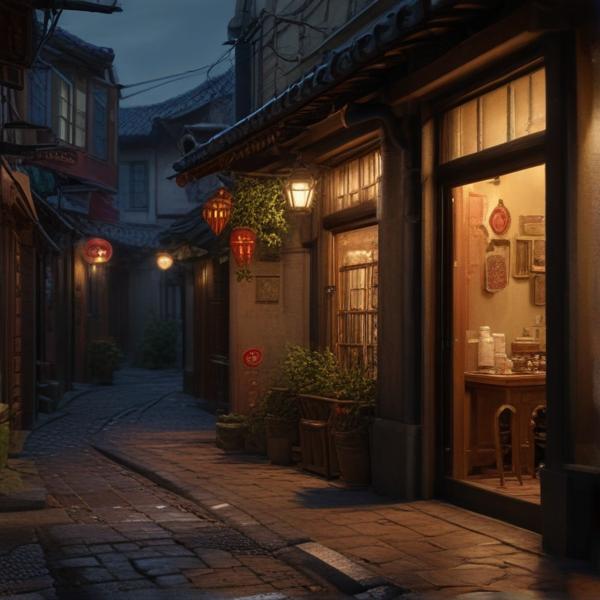基本信息 (Basic Information)
含义与用法 (Meanings & Usage)
中文核心释义 (Core Chinese Meaning): 冶金、炼制金属;有时引申为美艳、妩媚。
英文核心释义 (Core English Meaning): smelting (of metal); sometimes refers to charming or enchanting.
象形意义 / 为何这么写 (Pictographic Meaning / Writing Rationale)
文言文释义 (Classical Chinese Meaning)
与现代意义相近,主要表示冶炼金属之意,有时也指冶炼的作坊、场所。Similar to modern meaning—mainly refers to smelting metals and sometimes to the workshops where this occurs.
深入学习 (In-depth Study)
字源故事 (Origin Story)
字形演变 (Character Evolution)
常用词语和例句 (Common Words & Examples)
冶金 (metallurgy)
冶金工程对于现代工业非常重要。
Eng: Metallurgical engineering is very important for modern industry.
冶炼 (smelt; to smelt (metals))
这个工厂专门冶炼铜和铝。
Eng: This factory specializes in smelting copper and aluminum.
妖冶 (charmingly beautiful; enchanting)
她妆容妖冶,引人注目。
Eng: Her enchanting makeup caught everyone's attention.
相关成语 (Related Idioms)
相关成语信息待补充。Related idiom information pending.
多语言翻译 (核心释义) (Translations (Core Meaning))
- French: fusion (de métal), métallurgie; parfois charmant(e)
- German: Metallurgie, Schmelzen; manchmal bezaubernd
- Spanish: fundición (de metal), metalurgia; a veces encantador/a
- Italian: fusione (di metallo), metallurgia; talvolta affascinante
- Portuguese: fundição (de metal), metalurgia; por vezes encantadora
- Russian: металлургия, плавка металлов; иногда очаровательный
- Arabic: صهر المعادن؛ أحياناً ساحر/فاتن
- Persian: ذوب فلزات، متالورژی؛ گاهی دلفریب
- Dutch: metaalbewerking, metallurgie; soms betoverend
- Polish: metalurgia, wytapianie metali; czasem czarujący
- Vietnamese: luyện kim, luyện quặng; đôi khi quyến rũ
- Ukrainian: металургія, виплавка металу; іноді чарівний
视频学习资源 (Video Learning Resources)
通过以下链接在热门视频网站搜索 "冶" 的更多讲解:
Search for more explanations of "冶" on popular video sites:
- 在 Bilibili.com 搜索 "冶 字源 说文解字" (Search on Bilibili)
- 在 YouTube.com 搜索 "冶 character origin etymology" (Search on YouTube)
网络参考 (Web References for "冶") ()
网络内容摘要 (Web Content Summary):
冶的核心含义是指将金属熔化后,利用泥坯模型进行浇铸,是与冶炼(金属加工)相关的汉字。 “冶” mainly means to smelt or cast metals, often referring to the process of melting and casting metal using clay molds.
-
象形起源: “冶”字源自金文,由“人”(工匠)、“仌”(象征冻结、凝固)、和“土”(泥坯模型)的组合,形象地描绘了工匠用泥模凝固金属液体的场景。 Pictographic origin: In ancient script, “冶” combines symbols for 'person' (the craftsman), 'ice' (freezing/solidifying), and 'earth' (clay mold), together depicting a craftsman casting metal into a clay mold.
-
重要用法: “冶”常用作“冶炼”(to smelt)、“冶金”(metallurgy)等词汇。 Common usage: “冶” often appears in words like “冶炼” (to smelt) and “冶金” (metallurgy).
-
文化背景: 古代“冶”不仅指冶炼工艺,也指冶炼场所。例如历史典籍中“冶塘”、“作冶”均为官办冶铁场。 Cultural context: In ancient texts, “冶” not only referred to smelting techniques but also to smelting sites. Terms like “冶塘” or “作冶” described official foundries or workshops.
-
易混淆点: “冶”有时被误认为通“野”,但实际含义完全不同。 Easily confused: “冶” is sometimes mistakenly considered interchangeable with “野” (countryside), but their meanings are unrelated.
整体而言,“冶”字富含历史和工艺背景,常用于与金属加工、冶炼相关的专业或历史语境中。 In summary, “冶” has a rich historical and technical background, and is mainly used in contexts related to metalworking and metallurgy.
汉字"冶"的起源、演变过程-汉字字源辞典
冶 ,金文 (人,代表工匠) (仌,即 " 冰 " ,表示凝结 ) ( ⊥ ,即 " 土 " ,代表泥坯模型 ),表示工匠利用泥模凝结金属液体。 有的金文 将 " 人 " 写成 " 厶 " ,将 " 土 " (泥坯模型)写成 " 口 " (泥坯模型)。 篆文 承续金文字形。 造字本义:动词,将金属熔液浇铸在泥丕 ...
冶_百度百科
又 江南有梅根冶。《宋书·百官志》江南有梅根及冶塘二冶。《庾信·枯树赋》南陵以梅根作冶。《孟浩然诗》火炽梅根冶。 按此皆晋时冶官所居。杨愼谓冶卽野字,非。
更多图片 (冶 More Images) ()
